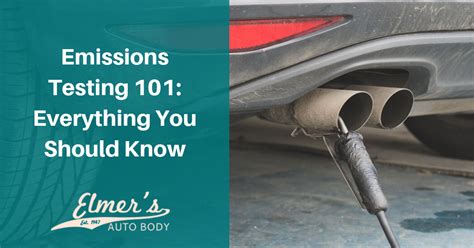Ace Your LS Emissions Test: The Ultimate Guide
Getting ready for your LS emissions test can feel daunting, but with the right preparation, it's entirely manageable. This comprehensive guide will walk you through everything you need to know to ensure your vehicle passes with flying colors. We'll cover pre-test checks, common reasons for failure, and tips for maintaining a clean emissions system.
What is an LS Emissions Test?
Before we delve into the specifics, let's clarify what an LS emissions test entails. The "LS" designation often refers to the type of vehicle, typically encompassing vehicles with GM's LS-series engines, known for their prevalence in trucks and SUVs. However, the term can be more broadly applied to emissions testing in various locations. The test itself measures the levels of harmful pollutants your vehicle emits, including hydrocarbons (HC), carbon monoxide (CO), and nitrogen oxides (NOx). Passing ensures your vehicle meets the regulatory standards for air quality. The specific requirements vary by location and year of manufacture, so it's crucial to understand your region's regulations.
What are Common Reasons for Failing an LS Emissions Test?
Understanding the common causes of failure is the first step to ensuring success. Here are some frequent culprits:
1. Malfunctioning Oxygen Sensor: This critical component monitors the air-fuel mixture. A faulty sensor leads to an incorrect mixture, resulting in higher emissions.
2. Failing Catalytic Converter: This component reduces harmful emissions. A damaged or clogged converter significantly impairs its function, leading to a failed test.
3. Problems with the Air Intake System: Leaks or blockages in the air intake system can disrupt the air-fuel mixture, causing higher emissions.
4. Vacuum Leaks: Small vacuum leaks can affect engine performance and lead to increased emissions.
5. Ignition System Issues: Problems with spark plugs, wires, or the ignition coil can result in incomplete combustion and higher emissions.
6. Exhaust System Leaks: Leaks in the exhaust system allow unburnt gases to escape before they reach the catalytic converter, contributing to higher emissions readings.
How Can I Prepare My LS Vehicle for the Emissions Test?
Preparation is key. Here's a checklist to ensure your vehicle is in optimal condition:
- Check Engine Light: A illuminated check engine light almost guarantees a failed test. Address any underlying issues before the test.
- Gas Cap: Ensure your gas cap is tightly sealed. A loose or damaged cap can cause leaks and affect emissions.
- Fluid Levels: Verify all fluid levels are correct, including engine oil, coolant, and power steering fluid.
- Recent Maintenance: Have you recently had any relevant maintenance performed, like spark plug replacement or a tune-up? This can significantly improve your chances of passing.
- Test Drive: Take your vehicle for a test drive before the test to ensure everything is running smoothly.
- Review Your Owner's Manual: Familiarize yourself with any emissions-related maintenance recommendations specific to your vehicle model.
How Long Does it Take to Pass an LS Emissions Test After Repair?
This depends entirely on the nature of the repair. A simple fix, like replacing a faulty gas cap, might allow for immediate retesting. More significant repairs, such as catalytic converter replacement, might require a short break-in period before retesting. Always follow your mechanic's recommendations.
What Happens if My LS Vehicle Fails the Emissions Test?
Failing the test usually means you have a limited timeframe (varies by location) to repair the identified issues and retest your vehicle. You will likely be given a repair order indicating the specific problems. Failure to remedy the issues within the allotted timeframe might result in penalties or restrictions on vehicle operation.
Can I Avoid Emissions Testing?
Emissions testing is a legal requirement in many jurisdictions. Attempts to circumvent the testing process are illegal and will result in penalties. Focus on ensuring your vehicle is properly maintained to avoid issues.
This guide provides a comprehensive overview, but local regulations might vary. Always consult your local Department of Motor Vehicles (DMV) or equivalent authority for the most accurate and up-to-date information regarding emissions testing requirements in your area. Remember, regular maintenance is the best way to avoid emissions test failures and keep your vehicle running smoothly.

